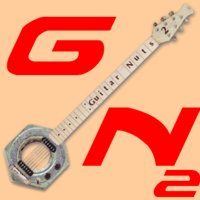You really can't reproduce the load on a passive pickup with an active EQ; at least I haven't figured out how to make them sound the same. In this case, where I get an unlistenable pick attack I've tried to EQ that out, but I couldn't figure out a way without just getting rid of the high end altogether. I've tried every kind of Q and cut depth, but it just sounded awful.
What I'm doing here is a different thing altogether; I'm actually shifting the resonant peak of the pickup itself, getting it to act like a different pickup. It's the basic character of the pickup that changes. You can move the resonant peak up or down just by placing a cap in series or parallel, respectively. You lower the peak with a resistor. The effect is truly like a pickup swap, although with no change in coil wind; when I finally did it correctly, realizing parallel meant one leg of the cap goes to the hot lead and the other to ground, that was like a revelation to me.
An EQ can't change the resonant peak. You can try a version of this just by going though the different input impedances of the Axe-FX III input block plugging in to the front input. You'll hear how the different values load your pickup. I actually created a wishlist for the next hardware version to allow for a fine control of this feature to load the guitar not for recreating the input impedances of gear, but to change the character of the guitar itself.
It's what Hendrix did by using an extra long cable, which lowered the resonant peak of his pickups with a bunch of capacitance, I assume to get rid of bridge ice pick tones.



